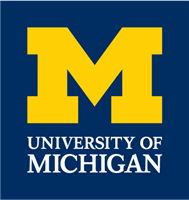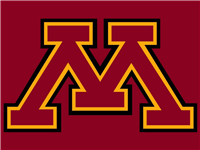
- Find Your College
- Scholarships
- Pay for College
-
Articles
- COLLEGES
- Most Recent
- Affordability & Cost
- College Search
- Comparisons
- College Majors & Minors
- Myths
- News & Trends
- Tips, Tools & Advice
- Admissions
- Most Recent
- ACT & SAT
- College Admissions
- College Applications
- Myths
- Online Colleges
- Questions & Answers
- About
- Home
- >
- Browse All Majors
- >
- Biological And Biomedical Sciences
- >
- Microbiological Sciences and Immunology
- >
- Microbiology and Immunology
Microbiology and Immunology
Select Type of Degree:
Select State:
|
#1

Tufts University
|
|||||||||||
|
#2

University of Pittsburgh-Pittsburgh Campus
|
|||||||||||
|
#3

Drexel University
|
|||||||||||
|
#4

Wake Forest University
|
|||||||||||
|
#5

Creighton University
|
|||||||||||
|
#6

University of Michigan-Ann Arbor
|
|||||||||||
|
#7

University of Minnesota Twin Cities
|
|||||||||||
|
#8

University of Miami
|
|||||||||||
|
#9

Saint Louis University
|
|||||||||||
|
#10

University of Illinois Chicago
|
|||||||||||
|
*The estimated net prices above are College Raptor’s estimate. Please contact the college financial aid office for actual net cost figures.
|
|||||||||||
| Institution | Scaled Score | Acceptance Rate | Annual Degrees Awarded | SAT Score | Est. Net Price * | Median Starting Salary | Save | |
|---|---|---|---|---|---|---|---|---|
 Tufts University Medford, MA Every year, Tufts University grants about 159 degrees to those majoring in...view more | 100 | 10% | 6 | 1,460 – 1,550 | $33,333 | $52,036 | ||
 University of Pittsburgh-Pittsburgh Campus Pittsburgh, PA Annually, the University of Pittsburgh-Pittsburgh Campus grants around 407...view more | 94 | 50% | 11 | 1,290 – 1,460 | $24,338 | $52,871 | ||
 Drexel University Philadelphia, PA At Drexel University, the most popular majors students pursue are Registered...view more | 87 | 78% | 7 | 1,240 – 1,440 | $42,342 | $48,897 | ||
 Wake Forest University Winston-Salem, NC Each year, Wake Forest University awards about 154 degrees to those studying...view more | 78 | 22% | 2 | 1,410 – 1,510 | $27,790 | $58,690 | ||
 Creighton University Omaha, NE At Creighton University, the three most popular college majors students study...view more | 77 | 72% | 3 | 1,190 – 1,380 | $33,364 | $56,765 | ||
 University of Michigan-Ann Arbor Ann Arbor, MI At the University of Michigan-Ann Arbor, the three most popular college...view more | 75 | 18% | 7 | 1,370 – 1,530 | $19,005 | $49,487 | ||
 University of Minnesota Twin Cities Minneapolis, MN At the University of Minnesota Twin Cities, the most popular majors students...view more | 74 | 77% | 8 | 1,290 – 1,420 | $16,730 | $52,753 | ||
 University of Miami Coral Gables, FL At the University of Miami, the most popular majors students pursue are...view more | 71 | 19% | 4 | 1,350 – 1,470 | $41,028 | $48,916 | ||
 Saint Louis University Saint Louis, MO At Saint Louis University, the most popular majors students pursue are...view more | 71 | 81% | 4 | 1,240 – 1,410 | $30,911 | $53,782 | ||
 University of Illinois Chicago Chicago, IL Every year, the University of Illinois Chicago awards about 426 degrees to...view more | 69 | 79% | 6 | 1,140 – 1,360 | $11,499 | $48,409 |
*The estimated net prices above are College Raptor’s estimate. Please contact the college financial aid office for actual net cost figures.
About Microbiology and Immunology
A program that focuses on the scientific study of the microorganisms that cause disease and the host immune response to them. Includes instruction in microbiology, microbial genetics, molecular virology, pathogenic bacteriology, disease mechanisms, immunology, immunogenetics, autoimmunity, and bioinformatics.
For all the 405 degrees awarded in Microbiology and Immunology per year, the majority of them are Doctors degree research scholarship. Of the 95 students earning degrees at the Doctors degree research scholarship level in the US, 37% percent identify as men and 63% percent identify as women. While students at schools all over the country study Microbiology and Immunology, Pennsylvania has the most graduates. The average starting salary for an undergraduate degree in Microbiology and Immunology is $44,600.
Careers
For Microbiology and Immunology majors, some of the most in demand careers include Medical Scientists, Except Epidemiologists, Biological Science Teachers, Postsecondary and Natural Sciences Managers. Not only that, Microbiology and Immunology graduates may find a high-paying job, such as Natural Sciences Managers or Medical Scientists, Except Epidemiologists.
Top Paying Careers
These are the highest paying careers for Microbiology and Immunology majors.
| Career | Median Salary | Average Annual Job Openings | Employment 2022 | Employment 2032 | % Change | |
|---|---|---|---|---|---|---|
| Natural Sciences Managers Clinical Research Coordinators Water Resource Specialists | $157,740 | 1,332 | 17,691 | 18,552 | 5% | |
| Medical Scientists, Except Epidemiologists | $100,890 | 3,600 | 57,120 | 62,736 | 10% | |
| Biological Scientists, All Other Bioinformatics Scientists Molecular and Cellular Biologists Geneticists Biologists | $91,100 | 1,052 | 13,529 | 14,044 | 4% | |
| Microbiologists | $85,470 | 380 | 4,681 | 4,927 | 5% | |
| Biological Science Teachers, Postsecondary | $83,920 | 2,643 | 29,452 | 31,954 | 9% | |
| Biological Technicians | $51,430 | 540 | 4,151 | 4,350 | 5% |
Most In-Demand Careers
These are the careers in highest demand for Microbiology and Immunology majors.
Student Demographics




Subscribe to Our Newsletter
Join thousands of students and parents learning about finding the right college, admissions secrets, scholarships, financial aid, and more.

College Raptor, Raptor, InsightFA, FinanceFirst, and “The Right College. The Best Price.” are registered trademarks of College Raptor, Inc.


